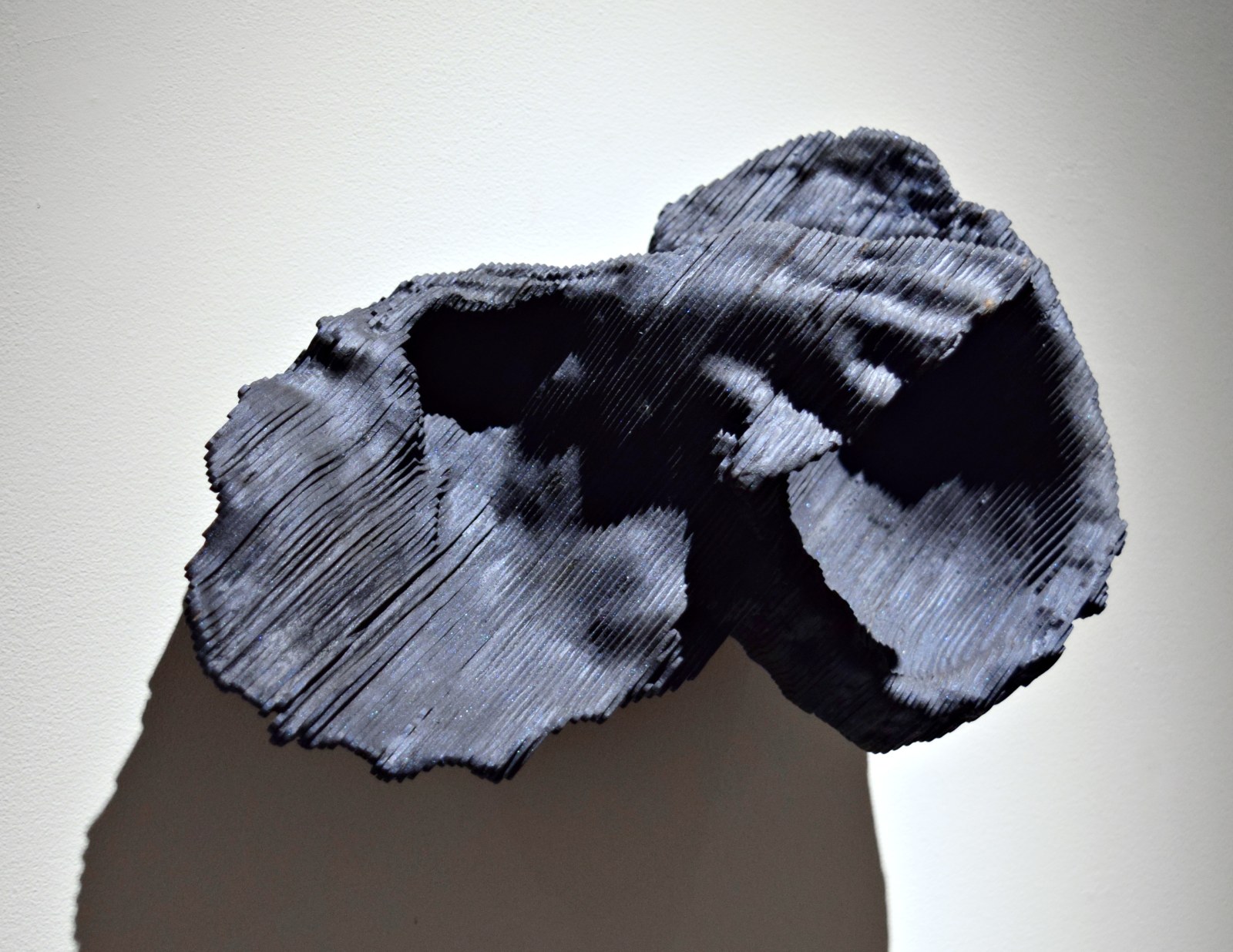
Twist in the wind, 2015
Jitish Kallat’s lenticular prints and Bharti Kher’s bindi works already take up precious real estate in your living room. The Vogue Art Report highlights 10 other seasoned artists you must cast your eye on.
ALWAR BALASUBRAMANIAM
Balasubramaniam’s minimalist sculptures, made using material like granite or sandstone, focus on our body’s physical and metaphysical relationship to the natural world, and the interplay between time, space, geographies and landscapes. He has been exhibited worldwide, including at the Museum of Modern Art (MoMA) and The Guggenheim, New York, and the Mori Art Museum, Tokyo.
PRANEET SOI
Praneet Soi draws from the effects of war, migration and the histories within which these are located to create paintings, sculptural works and interactive processes, such as his Astatic Machines (2011), where he designs a drawing machine to share his process with the viewer. Soi, who was one of four artists at the prestigious inaugural India Pavilion at the Venice Biennale in 2011, is part of permanent collections at the Van Abbemuseum, Eindhoven, and Kiran Nadar Museum of Art (KNMA), Delhi, among others.
MITHU SEN
A pivotal figure within the South Asian art world, Mithu Sen has developed a nuanced language that locates itself in political, cultural and feminist frameworks. Sen’s work is conceptual in its use of different mediums, including poetry, sound and performance, which she uses to critique (often with playful humour) the normative and hegemonic socio-cultural codes. She has had numerous solos in India and abroad and was part of the second Kochi-Muziris Biennale (2014-15). She has previously performed at the Tate Modern, London, and the Queens Museum, New York.
ROHINI DEVASHER
Rohini Devasher’s work spans a range of media, including sound, video, prints and drawings that explore landscapes and terrains as a set of uncanny visuals influenced by science, nature and culture. Her work becomes a way to deliberate through pertinent issues, such as the effects of global climate change. Devasher, who won instant acclaim as the recipient of the Skoda Prize for Breakthrough Artist in 2012, has shown at the Dhaka Art Summit 2016, and was invited to collaborate with the Dr Bhau Daji Lad Museum collection in Mumbai in September 2016.
GIGI SCARIA
Gigi Scaria’s large-scale sculptures, installations and paintings are located in the painful truths of migration and displacement. His Elevator from the Subcontinent (2011), created for the India Pavilion of the 54th Venice Biennale, simulated the upward movement of an elevator with moving images simultaneously screened within the four-walled enclosure depicting the visual density and close proximities that mark life in overcrowded South Asian cities.
SONIA KHURANA
The 1968-born feminist artist scandalised puritanical eyes when she showcased her three-minute video work Bird (1999) for which she bared her unflatteringly naked self with arms flailing like a fledgling struggling to take flight, thus revealing the paradox between her body’s weight and its impulse towards flight in the absence of wings. Since then, the irrepressible artist has made several moving video pieces that serve as documents of live performances done around the world, the most notable being Logic of Birds (2006), where she lies still in public spaces, mimicking lifelessness, inviting the pity of passers-by, and her most recent body of work reflecting on her relationship with her mother, Oneiric House: Round About Midnight (2014) at 24 Jor Bagh, Delhi.
KM MADHUSUDHANAN
The Kerala-born Indian filmmaker and artist has a strong interdisciplinary practice. His seminal installation The Logic of Disappearance—A Marx Archive was part of the Kochi-Muziris Biennale (2014-15) and was included in the main exhibition of the 56th Venice Biennale, curated by Okwui Enwezor. Madhusudhanan works with narrative as well as non-linear storytelling that looks at histories of war and India’s colonial and postcolonial narratives. His film, Self Portrait, was named Outstanding Film from International Festivals by MoMA, New York, in 2007.
VIBHA GALHOTRA
Vibha Galhotra’s practice has dwelled on the subject of a city—specifically New Delhi and its relationship to the River Yamuna. The ghunghroo, the base unit for her large-scale sculptures, installations and works on canvas, has become her signature motif. Galhotra has expanded her visual language to incorporate material such as cement and mud. She was the 2016 Asian Culture Council (ACC) Fellow and received the Rockefeller Foundation’s Bellagio Centre Residency.
DESIRE MACHINE COLLECTIVE
In 2004, Sonal Jain and Mriganka Madhukaillya instituted Desire Machine Collective, creating work in a range of media with a hyper local focus, from the life of an orchid seller in Shillong to a sacred forest in Meghalaya. New York Times art reviewer Martha Schwendener singled out their 35 mm film Residue (2011), about an abandoned Guwahati-based thermal power plant, as one of the most polished works in Being Singular Plural, an exhibition of video art and film from South Asia at The Guggenheim, New York, in 2012. The Collective was also part of the inaugural India Pavilion at the 54th Venice Biennale.
TALLUR LN
Tallur LN’s sly sense of humour inflects his sculptural and interactive site-specific installations, often life-sized, made by interjecting materials like sandstone, wood and bronze to evolve absurd yet astute relationships between traditional visual motifs and contemporary ideologies. Tallur draws extensively from his background in museology, which explains his deliberate attempts at fabricating antiquity—he usually buries his sculptures in termite-infested ground, encouraging their corrosive collaboration. “There is gain and loss in the translation,” he says. The 2012 Skoda Art Prize-winning artist has been widely exhibited around the world. His work was included at the seventh Asia Pacific Triennial of Contemporary Art and at the Kochi-Muziris Biennale (2012-13).
-Meenakshi Thirukode